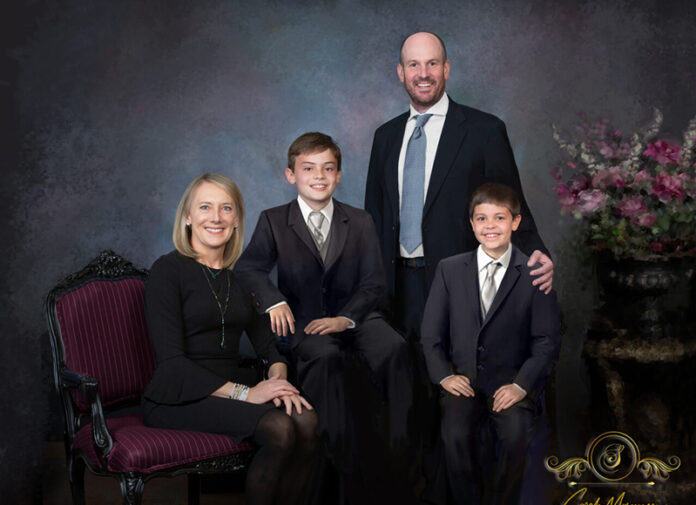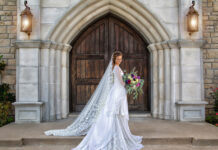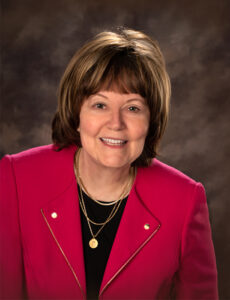 the Sarah Musumeci story
the Sarah Musumeci story
by Bill Hedrick
There are those who believe that gifted photographers were born with a camera in their hands and created masterpieces at the age of four. Most of us know that simply is not the case. Sarah Musumeci of North Andover, Massachusetts, considered photography as little more than a childhood hobby. In fact, her eyes were set on a college degree in Classical Music and Childhood Education when she discovered the world of art from a stack of tissue paper in a college art class.
Sarah wasn’t thrilled about taking the required art class. She didn’t like the demonstrations and assignments which she considered to be “too far out and too radical” for a conservative girl like herself. “One assignment we were given was to create a scene or a portrait using colored tissue paper,” she explains. “There were loads of it in a variety of colors, hues, values, and saturation. We were given this tissue paper and a canvas board and told to design an image, creating depth and interest with different and tiny pieces of ripped off colors of tissue paper, gluing them on as we created our picture. I had absolutely no idea what I was doing!”
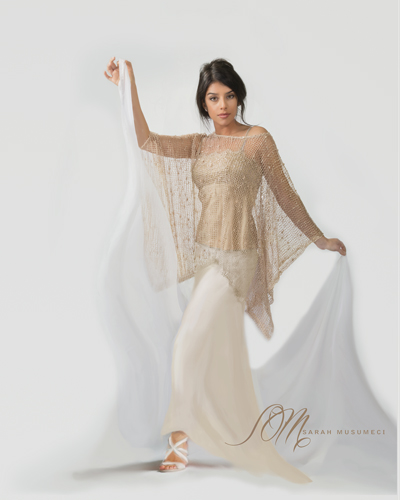
That weekend, Sarah went home and explained the project to her Mom who, much to Sarah’s surprise, found the assignment “utterly fascinating” and decided to give it a try herself. “When I came home again three weeks later, on the wall was a larger than life animated and jaw-dropping portrait of a clown, made from tissue paper! I loved it and realized that I had to change my way of thinking, resolving to keep more of an open mind toward art projects from now on.” But Sarah’s Mom was so excited about what she had done that she signed up for an art and painting class at a nearby community college and eventually taught the same class for several years. Two of her paintings are currently in the Massachusetts State House Permanent Collection. It was a lesson that Sarah would never forget.
Several more years would go by before fate would intervene in Sarah’s life when a hand injury would force her to use her left hand for everything. “During therapy and rehabilitation, I was told that if I did not take the six months or so of therapy seriously, I might never be able to use my right hand again. I was horrified and did everything I was told and more,” she recalls. One of the suggestions given was to take up an old hobby that would make use of her hands, something that she could do daily. That’s when Sarah remembered her camera.
After joining a camera club, Sarah soon discovered that photography was more than just therapy, it appealed to her creative side and stimulated her thinking, so she joined a camera club to learn more about her newfound hobby. “My hand was being used and I was having a ball with photography,” she explains. Soon, clubs in the area were asking Sarah to judge other photographs on a regular basis and, before long, she was judging photographs in other areas of New England. Sometime later, she would be judging photographs on a national level.
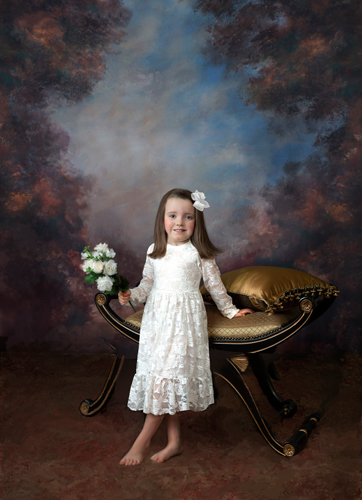 In the beginning, Sarah was photographing quaint little villages in her local area and charming old buildings built in the early 1900s. “I was drawn to buildings and structures, so I began studying architectural photography, something that had always fascinated me,” says Sarah. In no time, businesses were taking notice of her photographs and architects and builders were hiring Sarah to make images for their websites. “I did that for about 15 years and will occasionally now shoot some architecture just for fun.”
In the beginning, Sarah was photographing quaint little villages in her local area and charming old buildings built in the early 1900s. “I was drawn to buildings and structures, so I began studying architectural photography, something that had always fascinated me,” says Sarah. In no time, businesses were taking notice of her photographs and architects and builders were hiring Sarah to make images for their websites. “I did that for about 15 years and will occasionally now shoot some architecture just for fun.”
Even so, Sarah knew she could do more and, about that time, she learned of Corel Painter. “A friend of mine and I decided to give it a try and purchased it with no idea of what we were doing,” she says. “But we stuck with it and soon I painted a few travel photos from some of our vacations and a few buildings from my architectural photographs. I even tried a few portraits.”
The only problem with doing portraits was that Sarah simply did not have enough images of people. So she decided to open a small studio a few miles from her home “to learn lighting and posing.” Her subjects were mostly models and children.
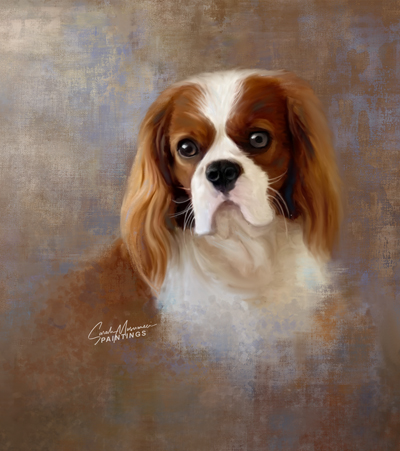 She loved painting images of people but the painting did not come easily at first. Then, in 2016, Sarah heard about a couple of photographers who would change her life forever… Joseph and Louise Simone. “I traveled to Europe with them and, over the next couple of years, studied another couple of weeks with them in Florida. Louise taught posing and painting and Joseph taught me how to take the perfect photograph with only one click of the shutter,” says Sarah who took meticulous notes, listened carefully, and practiced diligently over the next few years.
She loved painting images of people but the painting did not come easily at first. Then, in 2016, Sarah heard about a couple of photographers who would change her life forever… Joseph and Louise Simone. “I traveled to Europe with them and, over the next couple of years, studied another couple of weeks with them in Florida. Louise taught posing and painting and Joseph taught me how to take the perfect photograph with only one click of the shutter,” says Sarah who took meticulous notes, listened carefully, and practiced diligently over the next few years.
Other photographers would also have a huge influence on Sarah’s craft. One of these was Kimberly Smith. “I love her simplicity! Kimberly displayed characteristics of a true teacher, being organized, methodical, and would easily share any technique that would bring us closer to our goals.”
Along with this, Sarah began studying portraits and paintings of other great artists, both contemporary and historical, by visiting websites and museums. “I always tried to analyze other artists and their styles and attempted to mimic what I had seen in my own portraits and paintings.” She also discovered that Corel Painter had hundreds of videos demonstrating how to paint with their product and continues to watch them today, in a quest for a new idea, a new brush, a new style, or a new trick.
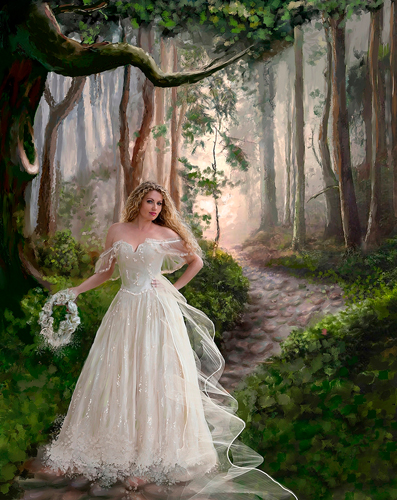
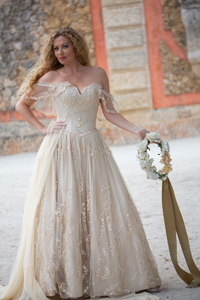
Then came the pandemic. “Yikes! I could not pursue my new interest in shooting models… no children, no pets, no families. So I decided to research my family genealogy, a long time dream of mine. I spent hours each day, month after month, pouring through the archives of various genealogical sites and family books that had been passed down to me from my great grandparents. The stories and the whole experience were enthralling and I discovered and documented some 21 or 22 ancestors who arrived via the Mayflower in 1620,” says Sarah.
But the real treasure she discovered was how families in the mid 1800s and beyond dressed up for family portraits. “Apparently, my ancestors took photographs seriously,” she explains. After studying over 100 years of family photographs, Sarah also noticed that studios in those early years used Victorian furniture and sonorous flowers alongside. “The gentlemen wore suits and bow ties… even tuxedos… and the women and girls donned long fancy dresses. I know they weren’t wealthy. they just wanted to pass on to their ancestors their best look and a visual record of themselves.”
This revelation made Sarah realize how family portraiture was slowly becoming a lost art, especially following the onset of cell phones and point-and-shoot cameras, so she began designing a studio set with furniture and flowers, much in the style of great artists from generations prior. “I wanted to do what my relatives of so long ago had done and to carve out my own path ahead.” She knew exactly what she needed to do.
By now, Sarah had moved into a larger studio and embarked on the arduous task of remodeling. First on the list was to sell all of her “unimaginative” stools, benches, tables, and chairs. On a daily basis, Sarah would scrutinize the used furniture ads both online and in local antique shops. She would even refinish and sometimes reupholster some of her new collections. “My husband enjoyed telling friends and relatives that his wife was really in the used furniture business, not the portrait business,” says Sarah.
This down time would also give Sarah a chance to fine tune her artistry. “One trick I learned from the Simones was to shoot some ‘bonus’ items that I might find throughout the day. You might just find a little something that might look appropriate later in the bottom or back of a portrait. I photograph these little jewels with my cell phone, download them to a folder on my desktop, and later paint them into a portrait. It might be a pretty floor vase seen in a restaurant, a gargoyle at the end of an upscale home’s driveway, or even an old stone fence along a country road.”
Her actual portrait sessions are planned carefully in advance. Whether working with one model or a family of five, Sarah will insist on a studio consultation. “Once I know who is coming to the studio, we talk about styles, clothing, backgrounds, and the overall look at our in-person consultation. Much of that time is spent on clothing,” she explains. “Some prefer simple portraits of just the subjects while others like more ornate photographs with lots of furniture and background items.”
Sarah promotes her studio using various social media applications but she realized she needed to get her photographs and paintings out there for potential customers to see. Along with new cards and booklets, Sarah advertised her work and even organized a very successful fund-raiser for Boston Children’s Hospital. One local magazine featured her business and that led to more calls as well. But Sarah admits that her biggest source comes from “word of mouth.”
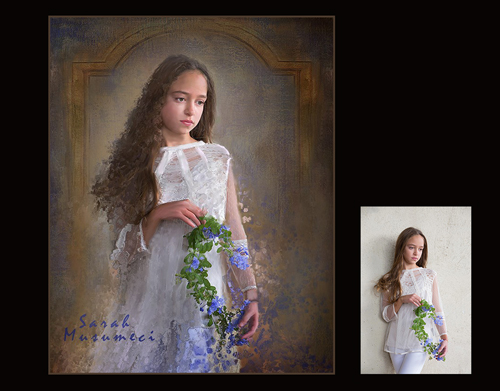
Her clients mostly come from a 20 mile radius of her studio. “The towns around mine represent a culturally diverse population. We have two cities and 8 or 10 smaller towns representing an assortment of ages, ethnic backgrounds, socioeconomic positions, and occupations,” she explains. “Surprisingly, my studio seems to draw from all of those sectors.”
Each day brings new opportunities and new knowledge but one recent assignment stands out among the others. It was called “Bride in the Woods” and was more of a self-assignment than an actual painting for a client. While attending a seminar in Miami, Florida, Sarah took a few photographs of a bride at a park. After reviewing the images back at the studio, Sarah decided to get “really creative” and change the entire look of the image.
“I selected the best image of her, cut her out, and placed her on a blank canvas. Then, I painted a simple yet elegant ‘ballroom’ behind her, as though she was at a wedding reception but it all looked boring. After spending a lot of time trying various techniques, I finally came up with the forest concept and used techniques I had learned over the years to paint a forest in the background, even adding a stone path with highlights and shadows of each stone. It finally came to life,” says Sarah.
It’s all part of a continual learning experience and Sarah Musumeci is just as excited about learning today as she was when she was introduced to the world of art by a stack of tissue paper. That early lesson taught Sarah to always keep an open mind and to look at each new day with enthusiasm and excitement. No doubt we’ll be seeing a lot more of her work in the future as well. Learn more about Sarah at www.sarahportraitartist.com.



